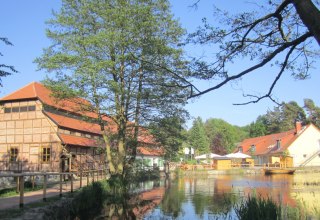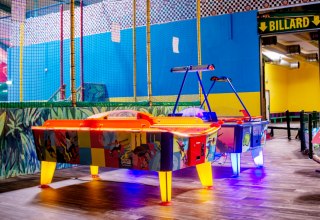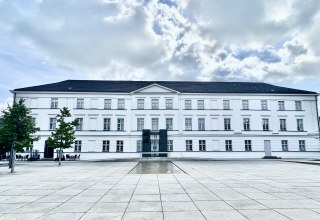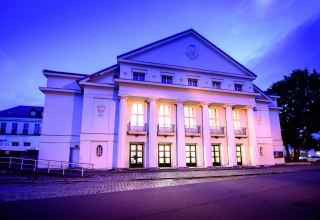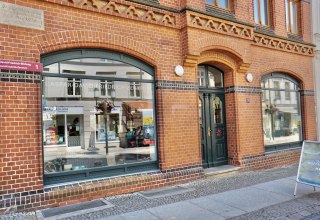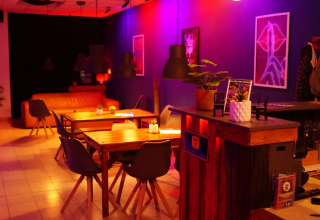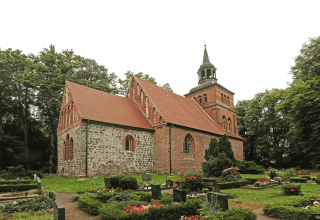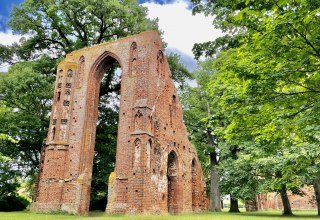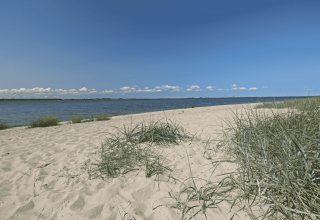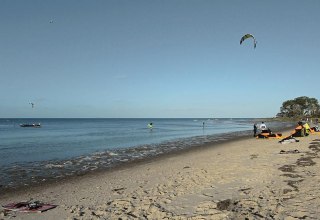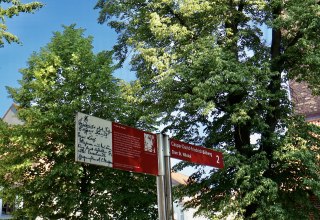The Renaissance palace Ludwigsburg was built between 1577 and 1592 as a widow's seat for Hedwig Sophie von Pommern-Wolgast. After her death in 1631 the palace changed hands several times until it was sold to the Greifswald merchant Weissenborn in 1810.
The district Ludwigsburg belongs to the municipality Loissin and inspires as a special excursion destination with one of the last preserved castles of the Pomeranian dukes in Germany.
The Renaissance castle Ludwigsburg, idyllically situated on the edge of the Greifswald Bodden, was built in 1592 by order of Ernst Ludwig, Duke of Pomerania-Wolgast, for his wife Sophia Hedwig. It is largely preserved in the original. After Sophia Hedwig's death in 1631, the estate changed hands several times until it was sold to the Greifswald merchant Weissenborn in 1810. After the expropriation of the Weissenborn family in 1945, the property deteriorated visibly due to lack of maintenance. Since 1997, the non-profit Förderverein Schloss- und Gutshofanlage Ludwigsburg e. V. has been working with the Weissenborn family to save this historic gem. In 2020/21, parts of the property were taken into the ownership of the state of Mecklenburg-Vorpommern for a symbolic purchase price, and the state has since been planning and executing the ground-up restoration.
The historical significance of the site is not limited to Pomeranian ducal history. Friedrich August von Klinkowström, a friend and companion of Caspar David Friedrich and Philipp Otto Runge, the two most important painters of North German Romanticism, was born at Ludwigsburg Palace on August 31, 1778. At the request of his father, an officer, Friedrich August von Klinkowström initially served in the military in Danzig for eight years before traveling to Dresden at the beginning of the 19th century to study art alongside Caspar David Friedrich from Greifswald.
In Dresden, the two shared an apartment and made the acquaintance of Philipp Otto Runge from Wolgast. Later, Runge would often visit his dear friend Klinkowström in Ludwigsburg. Thus the castle is also a meeting place for the "Romantics".
With its farm buildings, Ludwigsburg finally documents an agricultural estate at the turn of the 19th and 20th centuries, as was typical for Pomerania at the time. The ensemble is rounded off by the small but exquisite castle chapel from 1708 - in its tower the oldest still functioning church clock in Western Pomerania beats
- as well as a magnificent castle park, which invites you to linger.
The complete restoration of the Ludwigsburg Palace and Manor complex will take several more years. Meanwhile, not all parts of the complex are open to visitors. Several times a year, the Friends organize a herb and smoked meat market on the grounds in a very special atmosphere. Outside of these and other events, the Friends are happy to open the exhibitions during the season (April to September) by appointment.
Experience the history of Western Pomerania up close with examples of old buildings and let yourself be inspired by the original nature!









